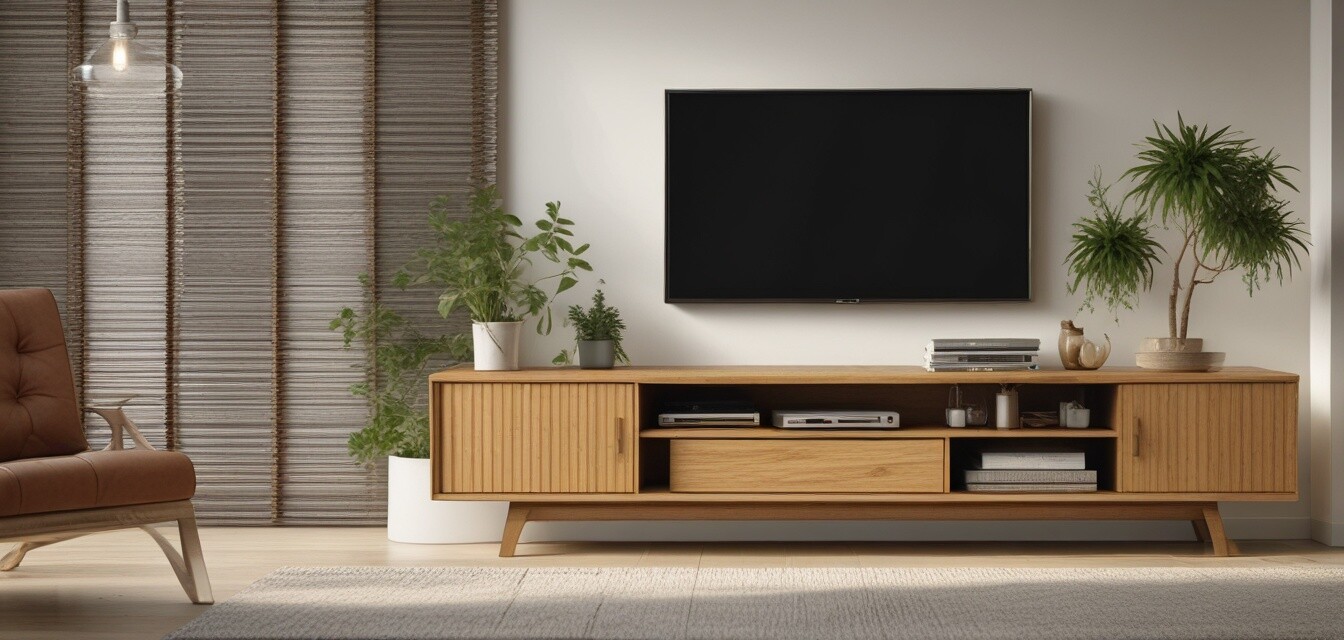
The Future of Furniture Retail: Sustainability Focus
- Sustainability is becoming increasingly crucial in furniture retail.
- Eco-friendly materials and manufacturing processes are redefining the market.
- Consumers are leaning towards sustainable options for their home furnishings.
- The impact of entertainment media influences design trends in TV stands.
- Innovations in design and technology are creating exciting opportunities in the sustainable furniture sector.
As the global focus on environmental issues intensifies, the furniture retail industry is witnessing a seismic shift. Sustainability is no longer a mere buzzword; it is a vital consideration that is shaping consumer preferences and industry standards. This article delves into the trends that are transforming the furniture landscape, especially concerning sustainable TV stands.
The Rise of Sustainability in Furniture Retail
Consumers today are more educated and aware of the environmental impact of their purchases. The furniture sector, particularly in the realm of TV stands, is adapting to meet these new expectations. Eco-friendly options are more prevalent than ever, driven by a combination of consumer demand, regulatory frameworks, and the pressing need to combat climate change.
Growing Environmental Awareness
Reports show a significant increase in the number of consumers seeking sustainable furniture. This is evidenced by the rise of brands that emphasize environmental stewardship. Furthermore, eco-conscious marketing strategies that promote sustainable living resonate more with today's shoppers.
Materials Driving the Change
The materials used in furniture production play a critical role in sustainability. Here are some of the most popular eco-friendly materials that are gaining traction:
| Material | Description | Benefits |
|---|---|---|
| Bamboo | A fast-growing grass that is renewable and durable. | Lightweight, strong, and sustainable. |
| Reclaimed Wood | Wood that has been salvaged from old buildings and furniture. | Reduces waste and carbon footprint. |
| Recycled Metal | Metals sourced from reused products. | Durable and reduces the need for new metal extraction. |
| Cork | A renewable resource harvested from cork oak trees. | Natural, biodegradable, and water-resistant. |
| Organic Fabrics | Fabrics made without harmful chemicals and from sustainable sources. | Eco-friendly and less harmful to the environment. |
Innovations in Furniture Manufacturing
Alongside new materials, the methods in which furniture is manufactured are also evolving. Innovations in technology are leading to more efficient production processes that prioritize sustainability. For instance, 3D printing technology is allowing for reduced waste in manufacturing. Eco-friendly living is becoming more feasible through these advancements.
Impact of Digital Technology on Retail
Digital technology is not only revolutionizing how consumers shop but also how companies engage with customers. With virtual reality, buyers can visualize how sustainable TV stands fit into their homes before purchase. Additionally, e-commerce platforms dedicated to eco-friendly products are on the rise, making it easier for consumers to find and choose sustainable options.
The Digital Showroom Experience
Stores are utilizing augmented reality (AR) to create virtual showrooms. This immersive experience helps customers understand product dimensions, styles, and sustainability credentials without leaving their homes. Such innovations are changing the face of retail by bridging the gap between sustainability and technology.
Shifting Consumer Preferences
The millennial and Gen Z audiences are highly influential in dictating market trends. These demographics prioritize sustainability, often choosing brands that align with their values. This shift necessitates that traditional retailers pivot towards more sustainable practices or risk losing market share.
Pros
- Aligns with consumer values for environmentally responsible products.
- Enhances brand loyalty among eco-conscious customers.
- Stimulates innovation in design and materials.
- Potential for cost savings with sustainable practices in the long run.
Cons
- Higher initial costs for sustainable materials
- Limited availability of certain eco-friendly products
- Consumer misconceptions about sustainability
Market Responses and Strategies
In response to these shifts, many retailers are implementing strategies geared towards sustainability. From adopting new materials to offering take-back programs, companies are competing on eco-friendly fronts. Brands that succeed in positioning themselves as leaders in sustainability are witnessing positive consumer engagement and loyalty.
Examples of Sustainable Strategies
- Eco-labeling: Clear labels indicating the sustainable credentials of products.
- Product Lifespan Transparency: Information regarding the durability and end-of-life options of products.
- Community Engagement: Involving customers in sustainability efforts through workshops and initiatives.
Conclusion: The Future Looks Green
The future of furniture retail, particularly in the realm of TV stands and media storage solutions, is undeniably heading towards a sustainable direction. As consumers continue to demand accountability from brands, the industry must adapt by integrating sustainable practices across their operations. Emphasizing eco-friendly options will not only benefit the planet but will also create a stronger bond between retailers and their customers. The transition may come with challenges, but the rewards of pioneering sustainable solutions will undoubtedly lead to a thriving market.
Stay Updated
For the latest news and trends in sustainable TV stands and eco-friendly furniture, make sure to follow our News and Trends category.